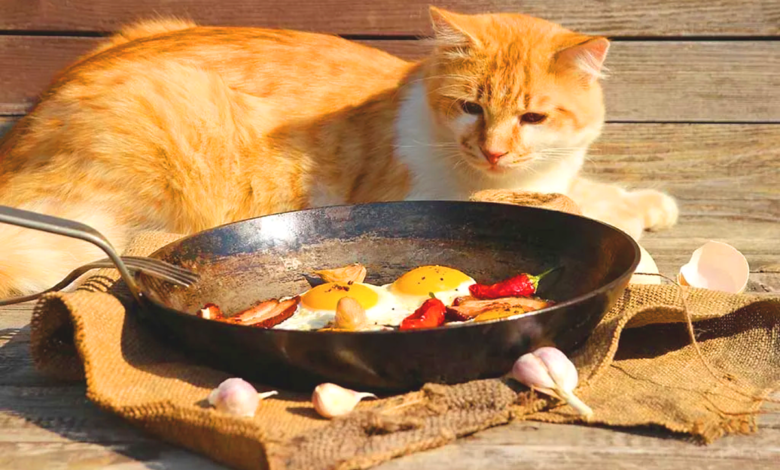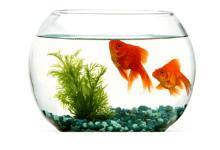
How to Find the Perfect Healthy Cat Food 2024
One of the most crucial things you can do is to provide your cat high-quality food. However, how can you be certain that you are picking the healthiest and greatest cat food?
There are a plethora of cans and bags of healthy cat food available on the market that make various health claims, some of which are supported by scientific study and others of which are not.
Find the Perfect Healthy Cat Food
Understanding the fundamentals of a cat’s nutritional requirements will help you make sense of the possibilities, even while there isn’t a “one-size-fits-all” solution for what you should feed your pet. Starting with a perspective on meals from your cat is the best way to go.
What Do Cats Eat?
Since cats are obligate carnivores, animal proteins make up the majority of their diet.
Small rodents, which are thought to contain around 55% protein, 45% fat, and very few carbs, are what cats would typically consume in the wild. A tiny rodent’s average calorie count is around 35.
Read More : Mastering the Art of Walking Small Dogs: Essential Tips for Pet Owners
A 10-pound house cat requires around 250 calories a day, or roughly 7-8 mice.
Cats usually eat most or all of their prey when they hunt. Cats often consume their nutrient-rich organs (such as the liver) first, then their muscle, bone, and skin.
Why Mealtime for Cats Is More Than Just Eating
Since cats are hunters by nature, they would search for and consume a variety of little foods both during the day and at night. Domesticated cats who are fed from bowls have been known to become chubby, bored, and sometimes even ill.
For cats, mealtimes provide an opportunity to display their predatory nature and “capture” their food, rather than merely consuming calories.
It is advised by the American Association of Feline Practitioners to simulate a cat hunt in an indoor setting. This is considerably better for their physical and behavioural health than feeding them out of a dish.
Place little amounts of treats and dry food in hunting feeders and conceal them about the home. Alternatively, place wet food in puzzle feeders to replicate a hunt.
Healthy Cat Food Is All About Balance
We need to feed cats enough protein and fat and as few carbs as possible to ensure their nutritional wellness for the rest of their lives.
Amino acids, fatty acids, vitamins, and minerals are necessary for cats. Without going overboard, you want to provide these nutrients in sufficient amounts. Certain vitamins and minerals in excess might be harmful.
Why Cats Need Animal Protein
Amino acids are the building components that make up protein. Amino acids come in two varieties: essential and non-essential.
The body of a cat is capable of producing unnecessary amino acids. Cats need to get their essential amino acids from their food since their bodies are unable to produce them.
Taurine is an important amino acid found only in protein and is unique to cats. Taurine must be included in a cat’s diet in sufficient amounts.
Within five months of a cat’s food being continuously low in taurine, the cat may develop dilated cardiomyopathy, a cardiac condition, or retinal disease.
How Much Protein Do Cats Need?
Cats need different amounts of protein at different stages of their lives. A growing kitten needs at least 240 grams of protein per kilogram per day, whereas an adult cat needs at least 140 grams per kilogram per day.
The beef proteins that are included in the ingredients on the bag’s back are more complex than they first seem. Take care that choosing healthy cat food is not primarily influenced by marketing.
Meat and meat by-products are only two of the many forms of animal protein available to cats and kittens. Although you may believe that by-products are undesirable, this isn’t always the case.
Meat Matters, But Not in the Way We Think
Some bags may have an attractive image of a deboned chicken breast, indicating that your cat is likely to devour this kind of meat.
For many people, eating anything else than deboned meat animal tissue is repulsive. However, if you consider “meat” from your cat’s point of view, it makes sense for them to devour the whole prey corpse. Their regular diet includes these alternative sources of protein.
Animal components that are edible but lack muscle, such as blood and organs like the liver and kidneys, are known as meat by-products. Recall that in the wild, cats often choose to consume the nutrient-dense organ meat of their prey before going for the muscular tissue.
For this reason, meat by-product is still a suitable source of protein for cats, even though many pet owners have long believed that it is inferior meat. Therefore, seeing that on an ingredient list for healthy cat food shouldn’t be a deal breaker.
Moisture Content Is Important for Your Cat’s Hydration
Cats need enough water to be healthy overall. The urinary system is one of the most vital feline bodily systems that is impacted by dehydration, and a cat that does not drink enough water will have more concentrated pee.
Concentrated pee has a higher propensity to crystallize and form stones, which may aggravate the bladder wall, raise the risk of a chronic infection, and—most importantly—obstruct the bladder’s ability to release urine, making it impossible for a cat to urinate. This illness may be fatal if treatment is not received.
In the wild, the moisture in the food that cats consume provides them with a large portion of their daily water demands. In addition, they take in as much fresh water as they can.
The moisture level of canned food most nearly resembles that of a cat’s natural prey. Canned cat food reduces the need for additional moisture from outside sources in cats.
It is obvious that dry cat chow has very little moisture. Dry food-eating cats need a lot more moisture from other sources.
All cats, however, need daily access to a sufficient supply of fresh, clean water. Certain cats like flowing water than stagnant ones.
A lot of cats would rather have their food and water sources in separate places. It is advisable to have many clean and replenished water basins or fountains around the home.
Fat Content Plays an Important Role
Cats need fats and fatty acids in their diets to be healthy.
Essential fatty acids are the building components that make up fat. Similar to the required amino acids found in protein, essential fatty acids also need to be included in the diet.
The omega-6 fatty acids, linoleic acid, and arachidonic acid are among the essential fatty acids for cats. Poultry, beef, and pig fats, as well as maize, soybean, and safflower oils, include linoleic acid. Fish oil and animal fat include arachidonic acid.
Depending on the stage of life and medical requirements of the cat, the amount of fat in their diet might vary greatly. Research indicates that fat may safely provide as little as 9% or as much as 50% or more of the calories in healthy cat food (on a dry matter basis).
The Need Carbohydrates Depends On Your Cat
For cat lovers, carbohydrates are a contentious topic. As little as 1%–2% of the calories in prey, on a dry matter basis, come from carbs in the diet of an obligatory carnivore. Wet food most closely resembles this out of the two types of food: moist and dry.
Carbohydrates are not necessary for an adult cat’s health. Cats can effectively and healthily utilize the carbohydrates in their diet as fuel, even though they are not necessary for them.
The typical healthy cat can usually handle dry food that has 40% or higher dietary carbs.
There is a worry that cats may develop diabetes as a result of the carbohydrates in dry cat food. Extensive study has been conducted and is still being conducted to evaluate the danger. However, there is currently insufficient evidence to establish a link between cats’ diabetes and higher carbohydrate intake.
Obesity and an indoor lifestyle do constitute risk factors for diabetes.
How Do You Choose the Healthiest Cat Food for Your Cat?
Your cat’s lifestyle and health will determine what food is best for them.
For information on your cat’s dietary requirements, speak with your veterinarian. To help you decide which cat food would be best for your cat, you may even bring a list of possible selections to your next visit.
These are some best-practice recommendations for nutritious healthy cat food to get you started on a list of things to talk about.
Choose the Right Life Stage for Your Cat
A cat’s dietary needs change constantly as it matures from a kitten to an adult and finally a senior.
To suit your cat’s demands at each stage of life, you’ll need to modify your intake of calories, protein, fat, and other nutrients. For this reason, you should always choose a healthy cat food that is appropriate for the particular life stage of your cat, or discuss the all-life-stages cat food you are thinking about with your veterinarian.
Look for Lifetime Studies and Brands That Test Their Food
The most important studies are those that track groups of cats given a certain meal over the course of a lifetime.
Dietary-related medical issues might take years to manifest. The most comprehensive information regarding the long-term effects of a certain food on your cat may be found in these lifetime studies.
If you don’t test for contaminants, it’s hard to identify harmful contaminants or deficiencies in essential ingredients.
Consult Your Veterinarian
It may seem simple, but selecting the safest and healthiest food for your cat may be difficult. Numerous views exist on which cat chow is “the best,” and there are hundreds of options available.
Read More : Balcony Safety Pets: How to Avoid High-Rise Risks
When choosing cat food, you should not base your decision just on the photos on the package or even the ingredient list. These sources fall short when it comes to describing the components’ provenance, quality, or how each one influences the overall nutritional balance of your cat’s diet in light of its stage of life and specific medical requirements.
Even if your cats are the same age, the ideal food for you to provide them can be different from the diet for someone else. Speaking with your veterinarian about your alternatives is the best way to determine which meal is the healthiest. Veterinarians are the experts in animal nutrition and have the best knowledge about the health issues affecting your cat.
Veterinarians who suggest nutritious meals do not get payment. The best diet advice for your cat should come from a veterinarian, both professionally and morally. This recommendation should be based on the best available research.







